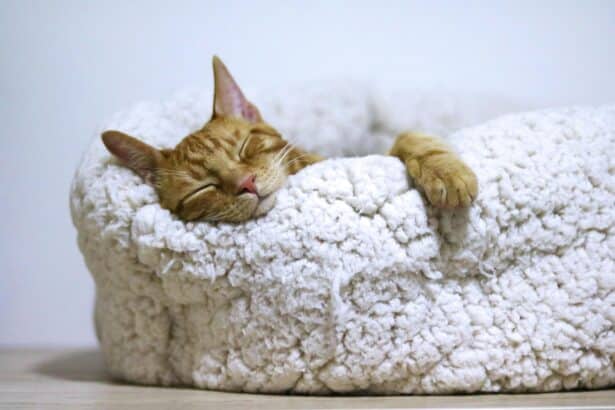Velvety to the touch and brimming with personality, the Sphynx cat is a little hot-water bottle with paws. Thinking of welcoming one home? Here’s everything you need to know to love them well—skincare, playtime, cuddles and all.
History and origin of the Sphynx
A lucky mutation with a big future
The Sphynx emerged in Canada in the 1960s, when a natural genetic mutation produced a hairless kitten in a domestic litter. Breeders then worked carefully with short-haired cats to create a healthy, stable line.
From curiosity to icon
At first glance, their look can surprise—but their playful, people-focused nature wins hearts for life. Curious about other unusual felines too? Explore our selection of rare and exotic cat breeds for more one-of-a-kind companions.
What makes the Sphynx unique
Appearance you’ll want to cuddle
Without fur, their skin feels like warm suede and shows off every expressive wrinkle. Large ears, lemony eyes and often sparse or curly whiskers give them a truly sculptural charm.
Temperament that follows you like a shadow
Sphynx cats are social butterflies. They love laps, chatter a lot, and insist on joining whatever you’re doing—emails, yoga, snacks included. Many happily befriend other pets, too.
- Affectionate and extroverted (expect a devoted sidekick).
- Energetic and curious (daily play is a must).
- Smart and trainable (think puzzle toys and clicker fun).
Surprising fact: Sphynx cats often produce more earwax and skin oils than furry cats. That’s normal—just part of their maintenance routine.
Health and care essentials
Diet that keeps up with their engine
With a peppy metabolism, Sphynx cats do well on high-quality, protein-rich food. Prioritize plain ingredients, good animal proteins and minimal fillers. Active Sphynx? Split meals or use feeders to avoid scarfing and boredom snacking. For balanced choices and portion ideas, see our guide on feeding your cat.
Skin, sun and bath time
Because oil isn’t absorbed by fur, regular gentle baths help prevent buildup and breakouts. Use a mild, cat-safe cleanser, lukewarm water and quick rinses. Pat dry thoroughly, paying attention to folds.
- Practical tip: Warm the bathroom and towels beforehand, and end the bath with a soft microfiber “squeegee” pass—less rubbing, less redness, faster drying.
- Mistake to avoid: Overbathing or using human shampoos. Too-frequent baths or harsh products can strip the skin and trigger irritation—stick to gentle formulas and a routine your vet approves.
- Shield delicate skin from sun and cold. Think cozy sweaters indoors in winter and shaded windows; skip sunscreen unless your vet specifically recommends a pet-safe product.
Grooming beyond fur
Check ears weekly and clean with a vet-recommended solution; never insert cotton swabs deep inside. Trim claws regularly and wipe eye corners if needed. Dental care matters too—add a gentle toothbrushing habit.
Living happily with a Sphynx
With kids and other pets
Sphynx cats crave company and often thrive with friendly resident cats or dogs. Introduce slowly, supervise at first, and teach children how to handle their warm, grippy skin kindly.
Play, enrichment and cozy comforts
Plan two to three short play sessions daily—feather wands for aerobics, puzzle feeders for brain work, and cozy nests for recharging. A sturdy cat tree turns vertical space into a gym and lookout. Need help picking one? Explore our guide to the best cat trees.
- Offer warm lounging spots: heated beds with low, safe settings or sunny perches (with UV protection).
- Rotate toys weekly to keep curiosity fresh.
- Use soft blankets—Sphynx love to burrow like little croissants.
Home setup, hygiene and litter
Because skin oils can transfer to fabrics, choose washable throws for favorite snooze zones and launder regularly. Keep litter boxes away from drafts and choose low-dust, gentle substrates for comfort.
Not sure which litter to pick? Here’s a handy guide to choosing the best litter for your cat based on odor control, texture and maintenance.
Vet care and prevention
Checkups and common concerns
Like all cats, Sphynx need routine veterinary visits, vaccinations and parasite prevention. Because of their special skin and large ears, ask your vet about a grooming schedule that suits your cat, plus any recommended genetic screening for the line your breeder uses.
Monitor for redness, pimples, flaky patches or discomfort after baths—your vet can adjust products or frequency to keep skin balanced.
Should you adopt a Sphynx?
If you want a devoted, chatty companion who loves warmth, playtime and being involved in your life, the Sphynx might be your heart-cat. They do ask for more skincare and grooming than average, but the bond is wonderfully close.
Set aside time for baths, cuddles, games and regular vet care—and you’ll have a cheeky, affectionate friend who thinks your lap is the center of the universe.
FAQ
Are Sphynx cats hypoallergenic?
No. Allergens are mostly in saliva and skin secretions, not just fur. Some people react less, but many still have symptoms. Meet a Sphynx in person before adopting.
How often should I bathe a Sphynx?
It varies by cat—often every 2–4 weeks, with gentle wipe-downs in between. Watch skin condition and ask your vet to tailor the routine.
Can Sphynx cats live in cold climates?
Yes, indoors. Provide warm beds, sweaters if needed and draft-free lounging spots. In summer, protect from direct sun and heat.
What do Sphynx cats need daily?
High-quality food, fresh water, a clean litter box, playtime, gentle skin care and lots of attention. They’re happiest when they’re with you—preferably on you.







